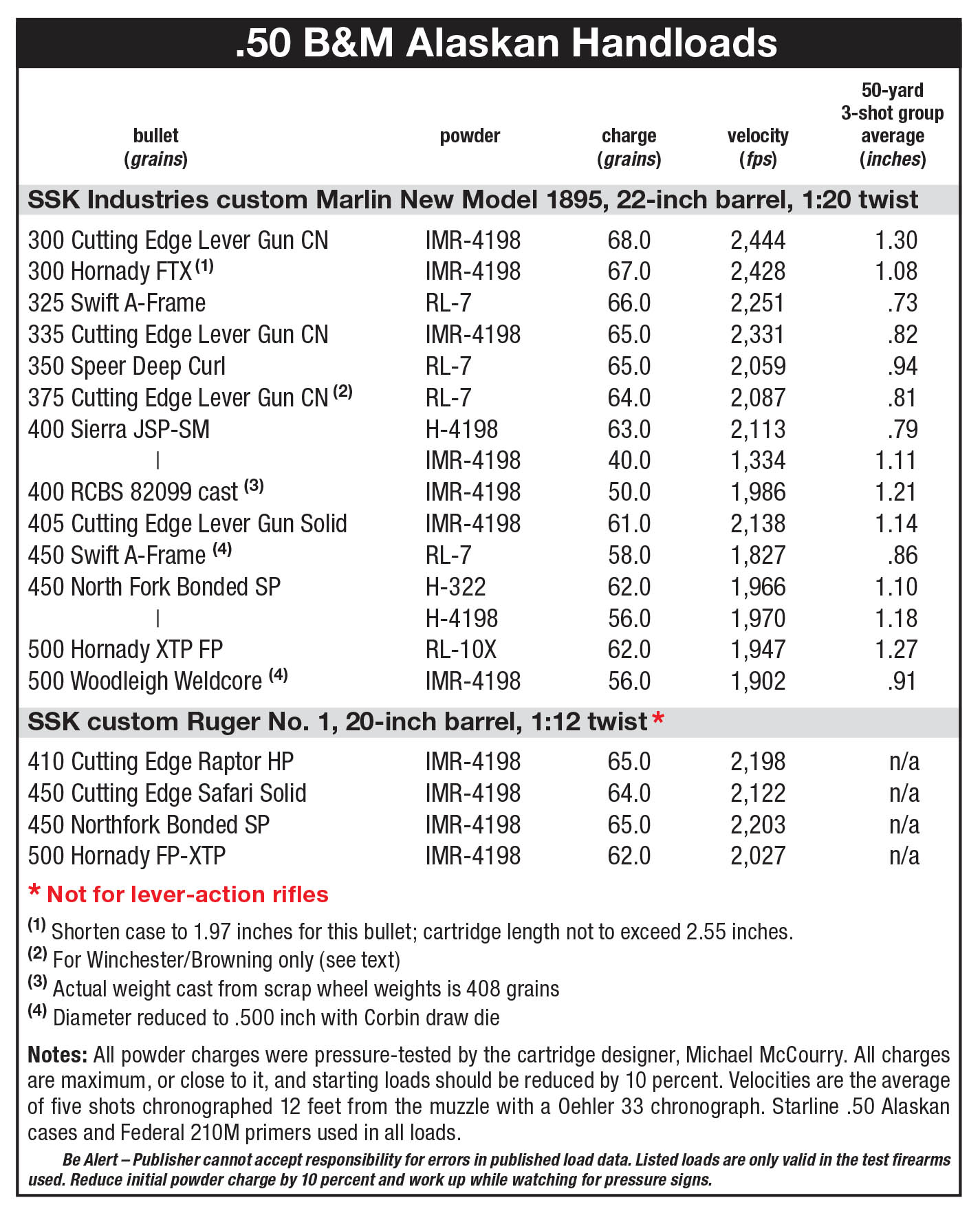Wildcat Cartridges
.50 B&M Alaskan
column By: Layne Simpson | February, 18
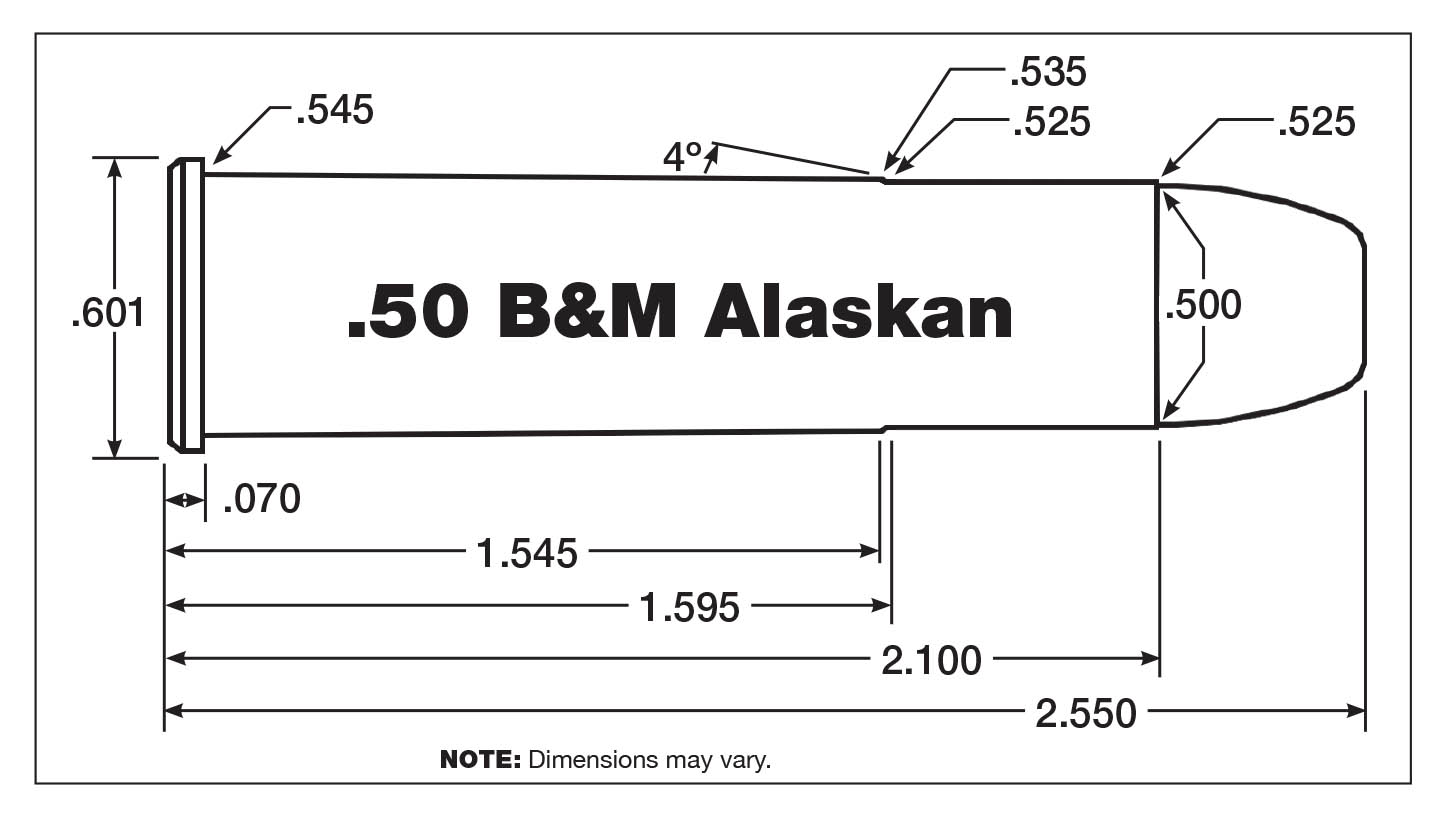
Sometime during the 1950s gunsmith Harold Johnson, who owned a shop in Cooper Landing Alaska called Johnson’s Kenai Rifles, decided to create a rifle and cartridge combination that would be ideal for back-up use by guides who were tasked with preventing clientele from being eaten by a brown bear or gored by a bull moose. His small advertisement in American Rifleman (May 1955, page 83) read: “The .450 Alaskan is the most powerful lever action made. Light, fast and handy, it is used from Alaska to Africa by hunters, guides and photographers. Uses .348 Winchester case with 400-grain, .457-inch bullet at 2,100 fps. New rifle on Winchester Model 71 action for $185 or $85 on your Model 71 action.”
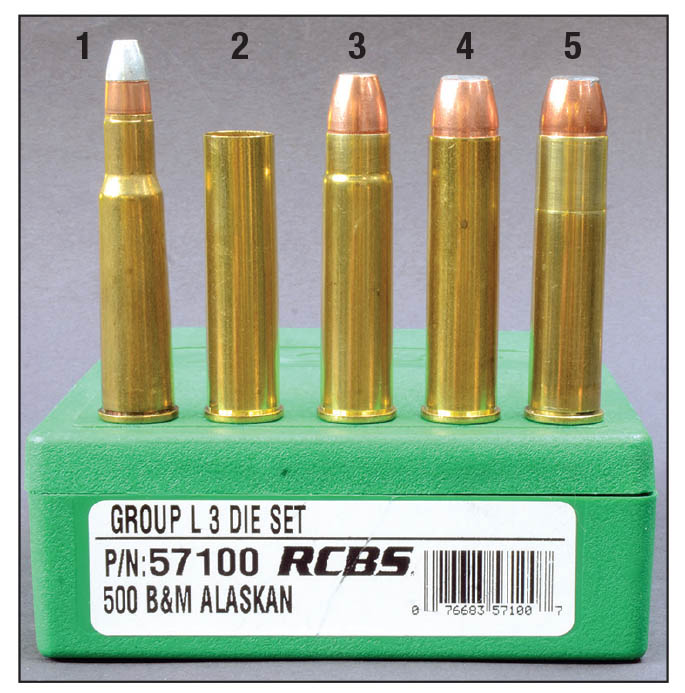
Fast-forward about 60 years and we have the introduction of the .50 B&M Alaskan by Michael McCourry (the “B” is for his friend William Bruton). It is but one of about a dozen of his wildcats in calibers ranging from 9.3mm to .50. Some are on the Remington Ultra Mag case, others are on the Winchester Short Magnum (WSM) case. Rather than simply design a new cartridge and leave it at that, McCourry heads to points around the globe for tests on various game ranging from Asiatic buffalo in Australia to elephant and Cape buffalo in Africa. And rather than guesstimating chamber pressures, he has his own pressure-testing equipment at an indoor range. He also designs bullets for his cartridges, and a recovery box allows testing them for expansion and penetration prior to heading to the field.
The original .50 Alaskan was made by necking up the .348 Winchester case and fireforming to minimum body taper. Doing so remains an option, but Starline eliminates the chore by offering fully formed cases. Bullet diameter for Harold Johnson’s cartridge is .510 inch, whereas Michael McCourry went with .500 inch, which just happens to be the diameter of bullets made
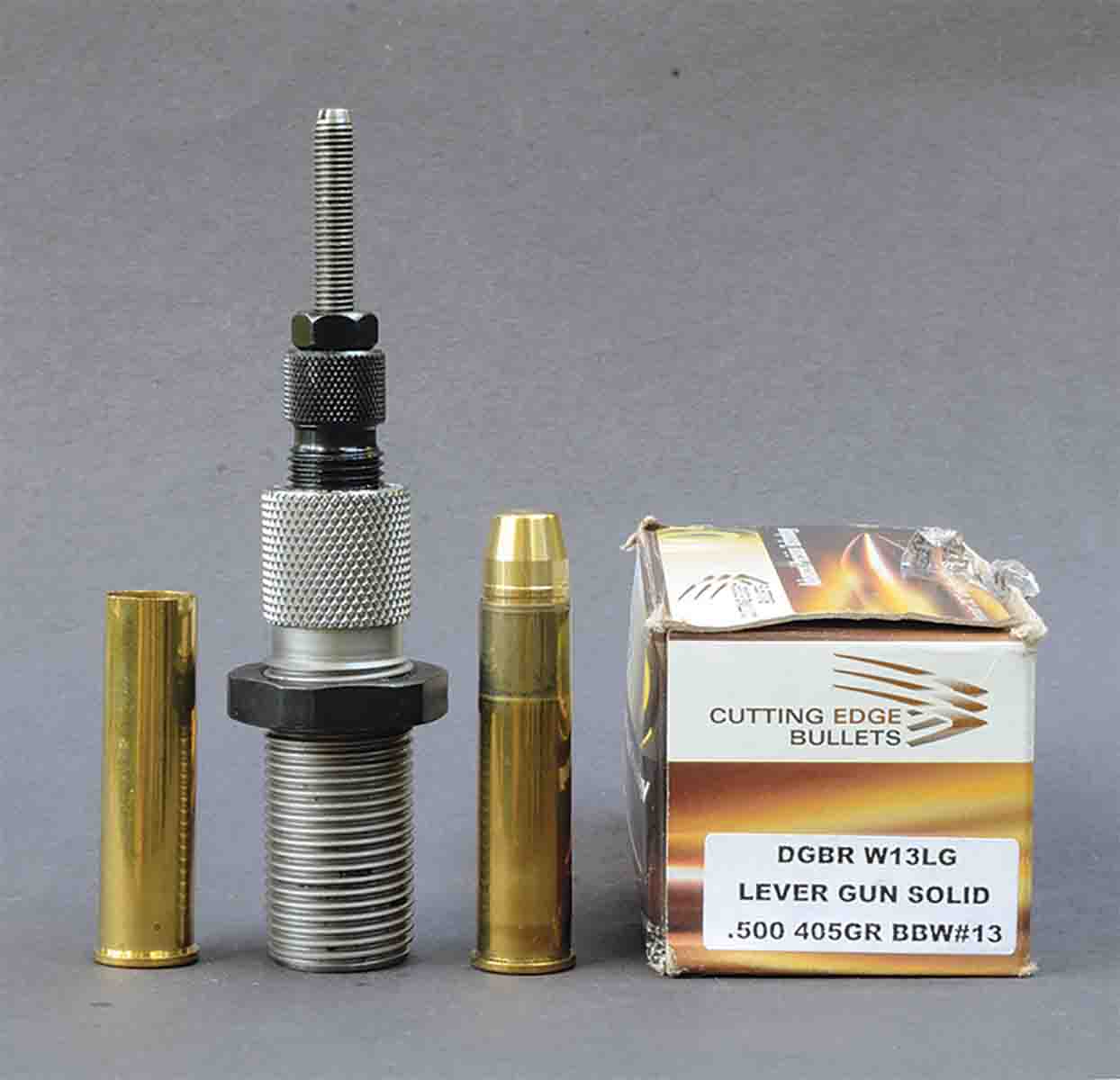
Only a few .510-inch bullets of the correct weight and style for the .50 Alaskan are available while .500-inch bullets are quite common. Using the slightly skinnier bullet increases the versatility of the original .50 Alaskan concept. As far as I know, the Swift 450-grain A-Frame is the lightest .510-inch bullet available for the .50 Alaskan, and while it would be an excellent big bear stopper, it is a bit heavily constructed for quick expansion on deer-size game. In regard to .500-inch bullets, and while heavier bullets of this diameter are available for the big stuff, lighter (and softer) bullets are better for use on deer, black bear and such. McCourry’s favorites for deer are the Hornady 300-grain FTX and the Sierra 400-grain JSP.
It is important to note that when pushed to maximum .50 B&M velocities, most bullets designed specifically for the .500 S&W Magnum are too soft for adequate penetration on heavier game. This especially holds true inside 50 yards, where velocities are still high. Stouter bullets suitable for use on bigger game are available.
Cutting Edge 300-, 335- and 375-grain, deep-cavity Lever Gun bullets included in the accompanying table were designed by McCourry and are available from Cutting Edge. He is especially fond of the heaviest version, but due to the position of its crimp groove, overall cartridge length is too long for the Marlin action to handle. Winchester and Browning Model 71 rifles accept slightly longer cartridges, so it works fine in them. With a wide flat on its nose, the monolithic Cutting Edge 405-grain Lever Gun Solid may be the only available tube magazine-friendly bullet of its type. Exiting the 18-inch barrel of a Browning 71 at 2,175 fps, it has proven to be quite effective on big stuff, including Cape buffalo.
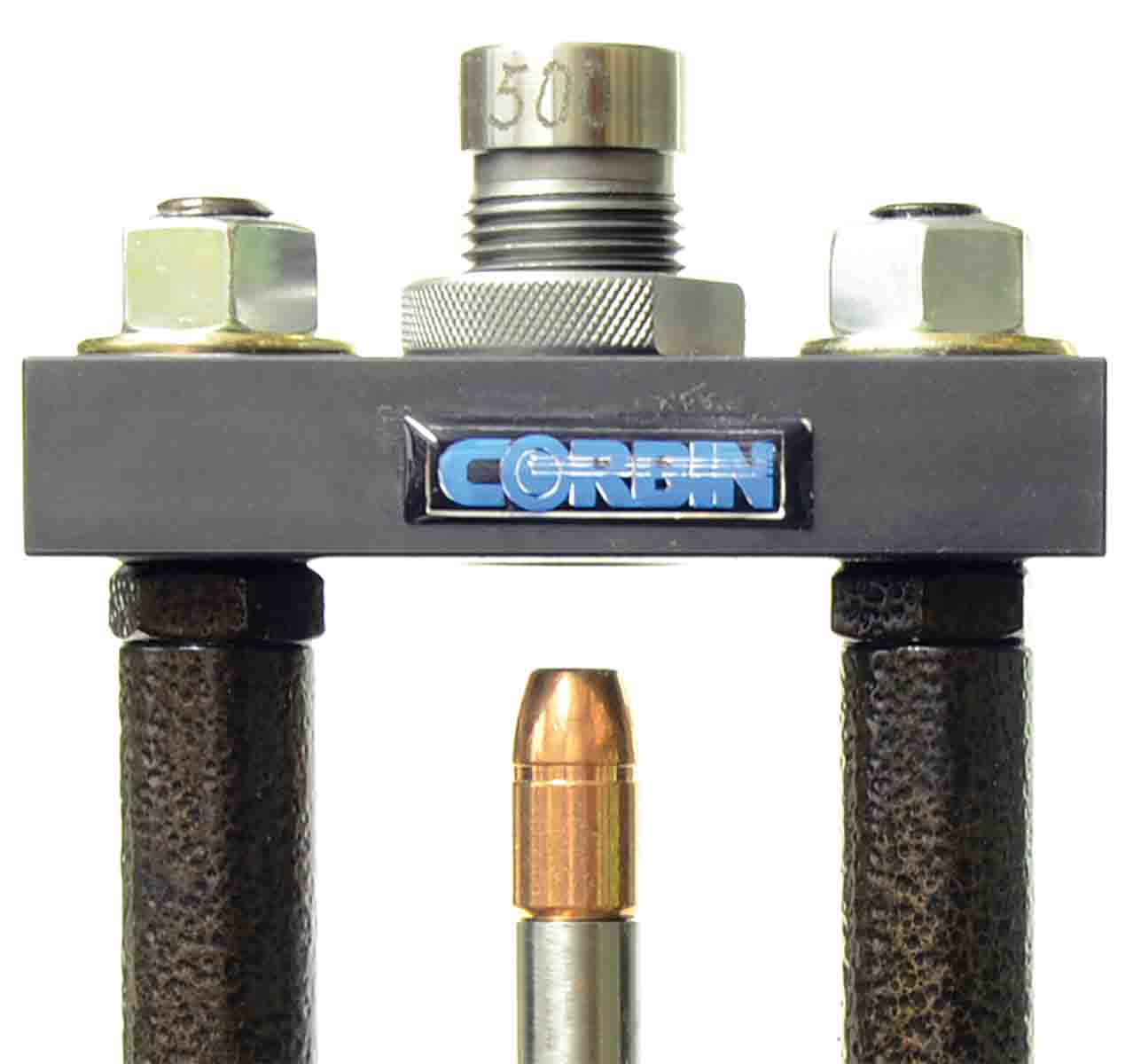
As powders go, IMR-4198 seems to do it all. The cartridge does have some recoil, so loading 40.0 grains behind any bullet weighing from 300 to 500 grains results in an excellent reduced-velocity load. Shooting the RCBS .500-400-SWC or Lyman No. 501680 bullet cast of scrap wheel weights saves money during practice sessions. Moving to the opposite extreme in velocity and power, no other powder beats IMR-4198.
The first .50 B&M Alaskan rifles I shot belonged to McCourry and were built by SSK Industries on Marlin New Model 1895 and Browning Model 71 actions. Both had 18-inch Pac-Nor barrels. My Marlin was also built by SSK, and its 22-inch barrel was made by McGowen Precision Barrels in Kalispell, Montana. It has a 1:20 twist and a muzzle diameter of .795 inch compared to .725 inch for the .45-70 barrel it replaced. Depending on the powder/bullet combination, velocity difference between it and an 18-inch barrel ranges from just a tad to upward of 75 fps. More important than a small increase in velocity is the reduction in muzzle blast from a longer barrel. Making the big cartridge flow smoothly through the Marlin action requires talent, and the guys at SSK obviously are blessed with an abundance of it.


